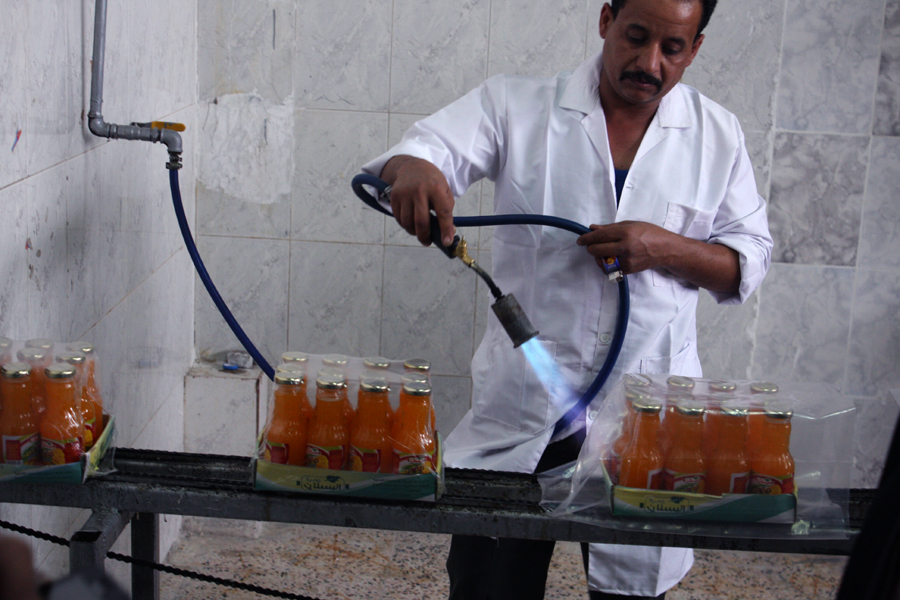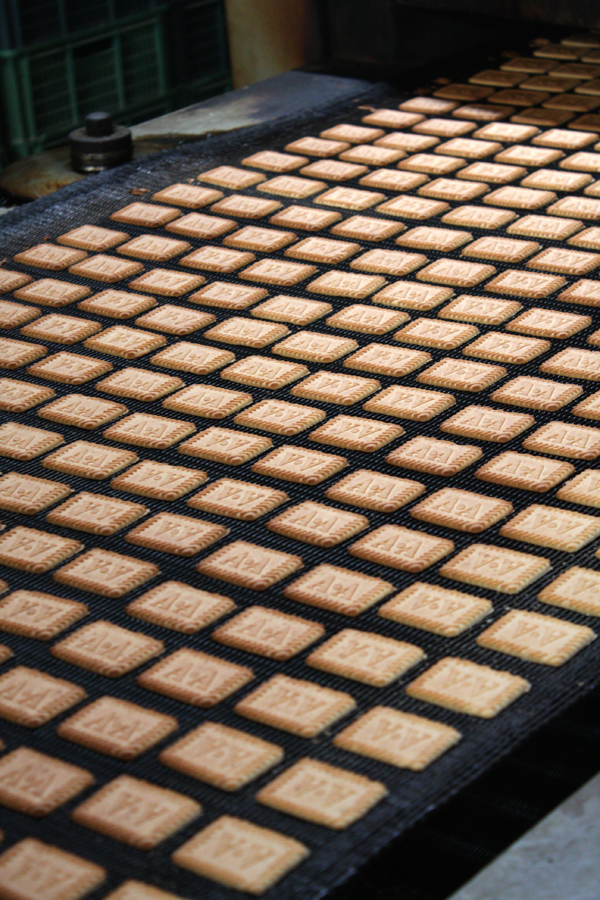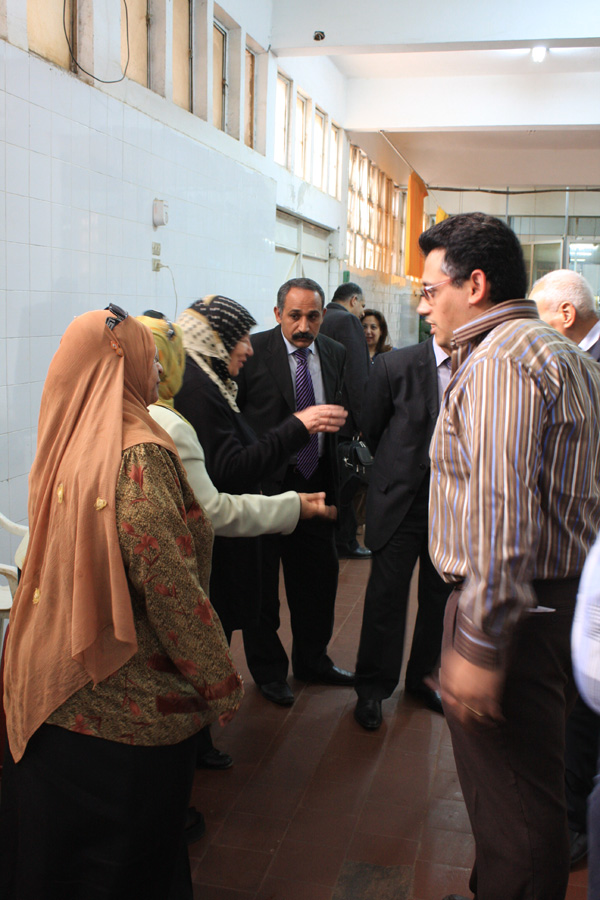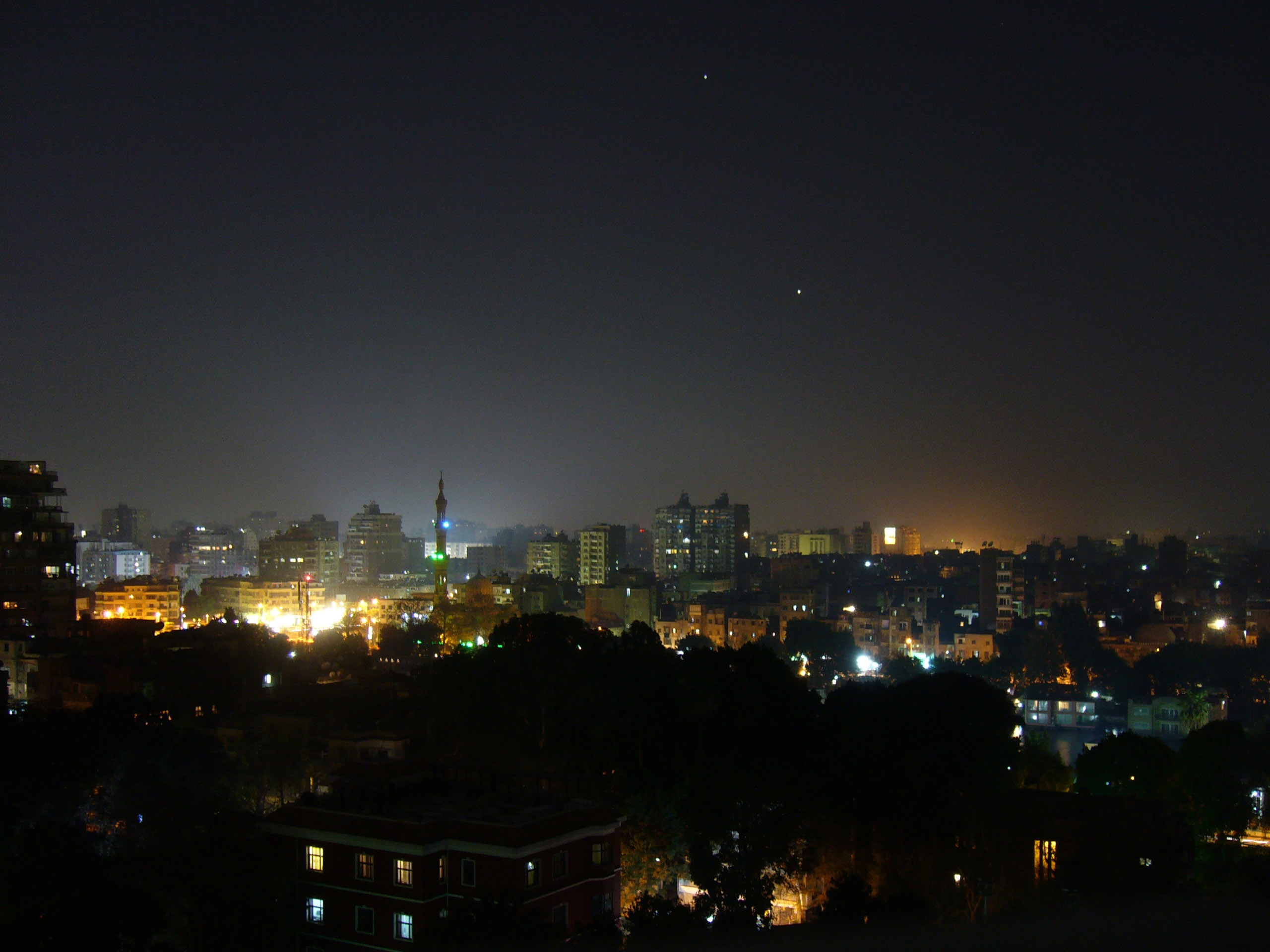Team Egypt kept up its busy schedule of meetings and traffic today. Our morning started with this brilliant example of transportation in the agriculture sector:
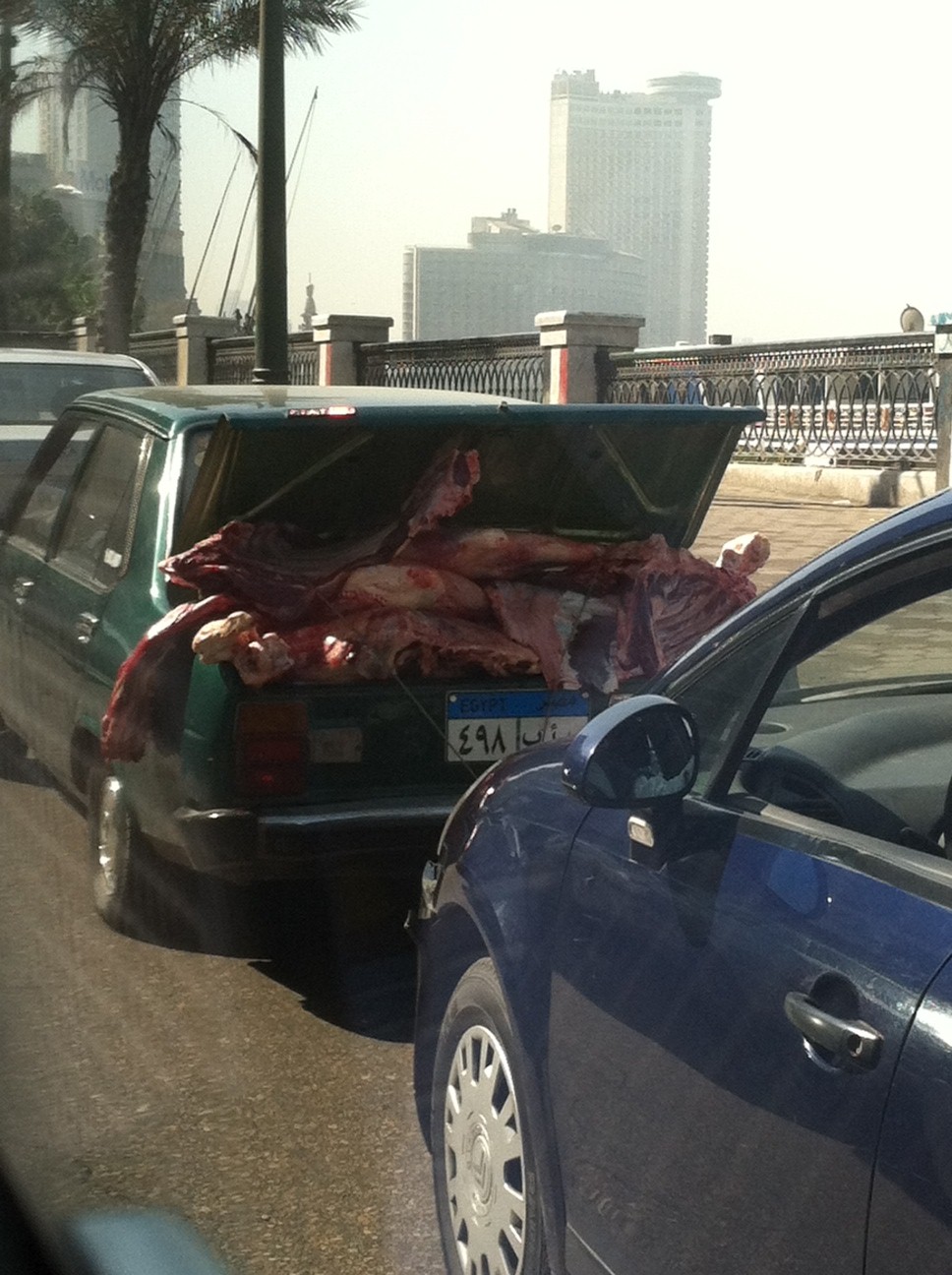
Yep. That’s raw meat in the trunk. Apparently it’s not at all an unusual sight in Egypt. It’s possibly also why the whole team subconsciously chose to eat chicken for both lunch and dinner.
Our first meeting of the day was a prime example of a key difficulty facing business operations in Egypt. We arrived at the Egyptian Junior Businessmen’s Association about 30 minutes late due to traffic only to find that the person we were supposed to meet with was also stuck in traffic. We managed to find a stand in at the office and managed a quick meeting before heading back into traffic to head off to our next meetings. The team split for the afternoon with half the group visiting the Population Council and the other half heading off to American University of Cairo for a meeting with one of the Assistant Deans of the Business program.
I was part of the AUC delegation, which turned out to be one of the most informative meetings we’ve had so far this week. Not only did we receive a terrific rundown on the challenges facing education in Egypt, we also were given an in depth analysis into many of the business problems we are addressing in our project. He supported our idea that high unemployment is due to a combination of lack of opportunities, lack of proper training, and lack of communication. We had been hoping to pin it down to one of the three, but it doesn’t look like that’s going to be the case. We also asked his opinion on using co-ops in the agricultural sector and got very positive feedback on the potential impact in Egypt and the general efficacy of the model. As we are providing a basket of recommendations for strategy and projects to CRS Egypt, some form of co-op model to bring small agribusinesses together will almost surely be one of them. We’ll have the chance to dive deeper into this recommendation in our site visits early next week.
The trip to AUC was also eye opening in regards to the income disparity in Egypt. It was a stark contrast from our trips to the slums yesterday. The New Cairo area near AUC looks like a typical affluent American suburb complete with McMansions and glass-walled corporate offices. The AUC campus was built all at once and has only been in use for about 3 years so it is beautiful and sparkling. 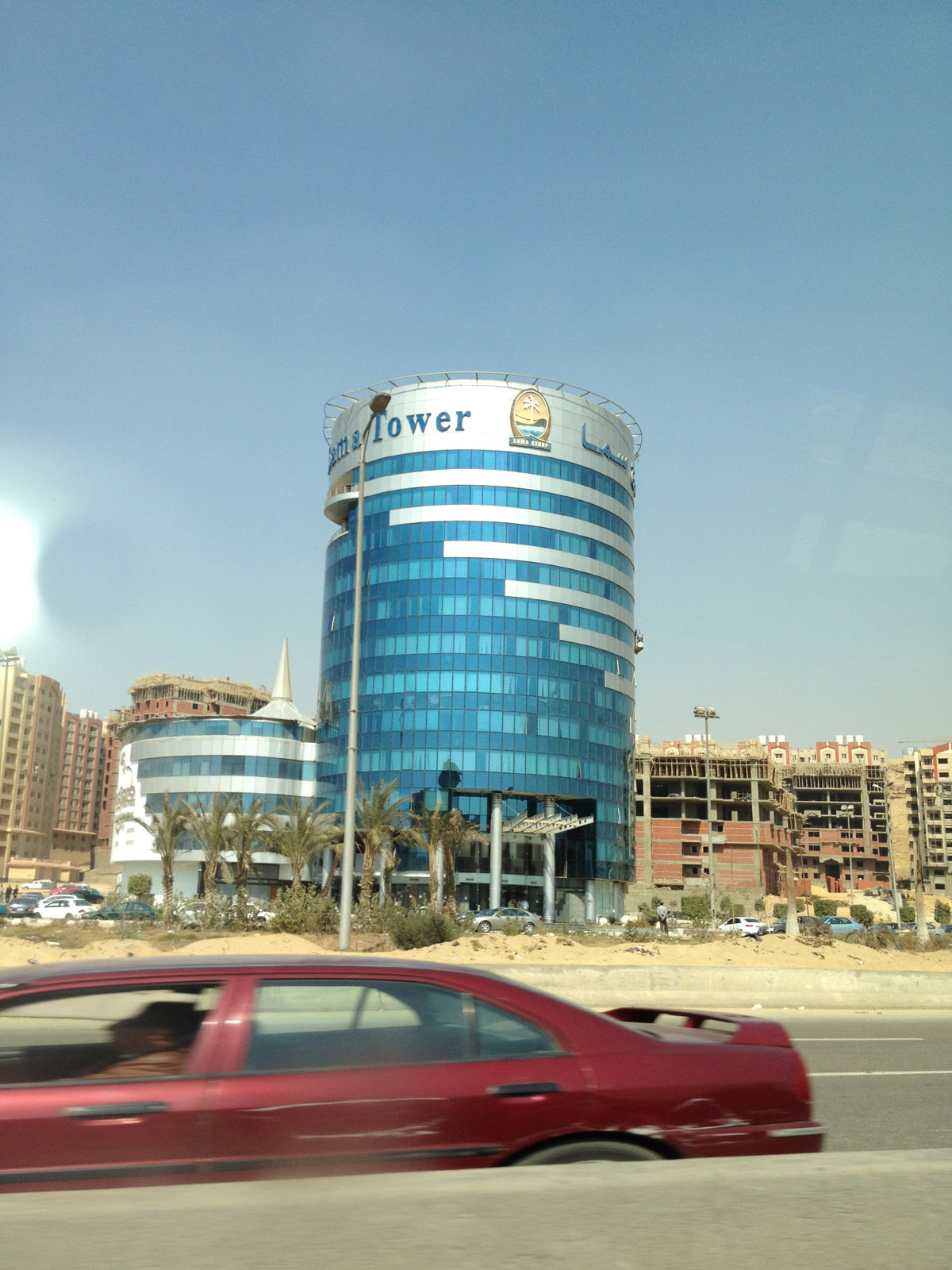

Tomorrow is another full day of meetings including the Social Fund for Development, the Food and Agriculture Organization (UN), the Egyptian European Organization for Training and Development, and a sociopolitical interview with a top academic. All of our meetings have helped to give the team insight and perspective on the challenges in Egypt, but I think our site visit yesterday really spoke to the heart of our purpose here. In the slums, CRS is helping people work and bring dignity to their communities. When they started clearing trash and rubble so that children wouldn’t have to walk on the train tracks to get to school, the community pitched in with neighbors bringing the workers tea throughout the day and a local business providing access to water for the project. When CRS provided a group of women a machine and enough material to produce plastic overshoes for 10 days, they used their own contacts and made new ones so that they could continue producing and selling long after the 10 days were up. Now, they produce in two locations with close to 50 women and also produce full length plastic gloves, in addition to the shoes. While the total number of people involved in these projects is small in comparison to the unemployment problem in the country at large, it provides a small snapshot of what the dignity of work brings to people and how CRS actively makes a difference in their communities. Hopefully our final recommendations to CRS will help expand their good work into the agriculture sector and serve more Egyptians.
P.S. Go Irish, Beat Huskies!

